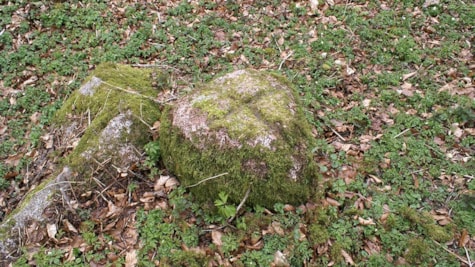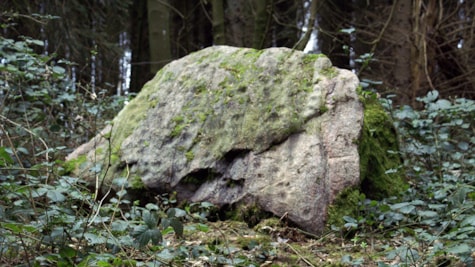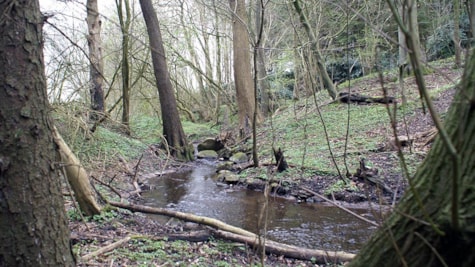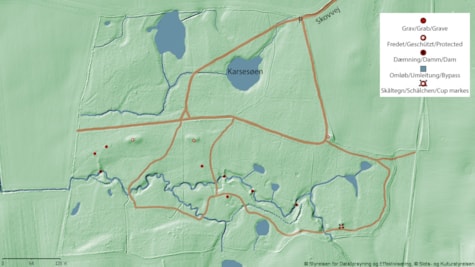Rumohrsgård Deer Park - ancient monuments
Distance: 13.52 Km
It has been a long time since the small forest was fenced off to keep the fallow deer in, but the name Dyrehave still sticks.
Rumohrsgård Deer Park is a cozy forest, where Hundslev Bæk winds its way past the small dams, tomb graves and round dolmens of earlier times. In the spring, both white and yellow anemones bloom in the forest, as well as the wild, protected orchid; thin-skinned cuckoo-herb. In addition, there are different kinds of grasses as well as Lund outlaw, bingelurt and day splendor star.
The dams
The dams are believed to have been used to hold the water in the 3 artificially created ponds, which may have been used to keep carp going in. When the dams were closed, the water was led further along the bypass channels.
The forest hides several burial sites, such as tuve trenches, round dolmens and long dolmens, as well as a bowl stone.
The bowl stone
Only about 1000 bowl stones are known in Denmark and this stone is one of the best preserved. The small round bowl signs are man-made depressions and there are no less than 155 of them on the stone in Rumohrsgård Deer Park. The cult stones, like this one, are believed to have been used in connection with worship and fertility rituals, where there may have been offerings of butter, honey or even blood.
Another special stone is the Cross stone, which stands on one of the long mounds and has literally saved the other stones from being removed, chopped up and used for construction.
The cross stone
It is in the year of the lord 1863 that the owner of the forest sends people out into the forest to pick up stones. There are many burial mounds with large stones in the forest and Hellemann wants to cut them up and use them for his construction at Rumohrsgård. When the people remove a cover on one of the long dolmens, they see that the stone below bears the sign of the cross and they dare not continue the work, but hurry back to the yard and tell Hellemann about the strange stone. He must then have said; so let them stand for the sake of the cross!
What Hellemann did not know was that the sign of the cross did not originate in connection with Christianity, but has been used as far back as the Stone Age. So we can thank a so-called pagan sign and general superstition that today there is a stone with the sign of the cross in Rumohrsgård Deer Park and that the other stones can still be seen.
NB. Find map under Download
Updated by: Destination Sønderjylland - Sønderborg | info@visitsonderborg.com



